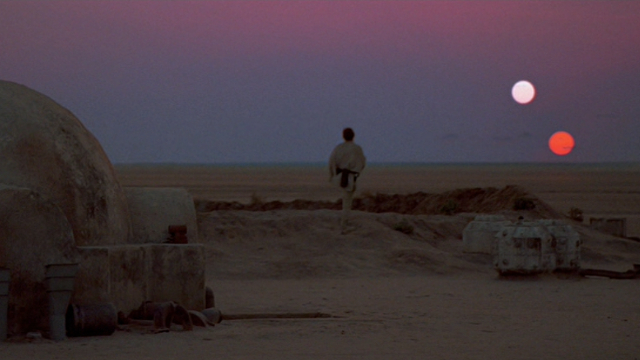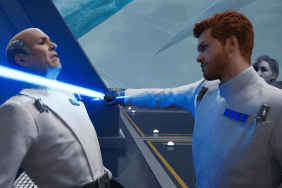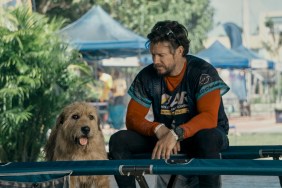Films are emblematic of the time which they are from. With the resignation of President Richard Nixon and the end of the decades-long war in Vietnam, U.S. audiences felt largely suspicious and disillusioned, and a new generation of filmmakers sought to respond to that sentiment with film. Some of them — like Paul Schrader, Martin Scorsese, Brian De Palma, and Francis Ford Coppola — attempted to capture this mood and distill it with dark portraits of Americans trying to make a living and make sense of the world. Other filmmakers — like George Lucas, Steven Spielberg, and Sylvester Stallone — however, did an about-face from their contemporaries. They identified in American audiences a desire for escapism, something they could feel good about as they left the theater. Lucas in particular conceived of modernizing the space opera serials that were excitedly embraced by the children of decades past, like Flash Gordon. This idea would eventually become Star Wars, which in turn would eventually become a multi-billion dollar franchise.
The release of the films has been unconventional, to say the least. Lucas started with what he called the “middle” trilogy in the 1970s and ‘80s before returning to the “first” trilogy in the 1990s and 2000s. Since he sold his studio Lucasfilm and all its properties to the Walt Disney Company in 2012, the chronology of the franchise has only gotten more confounding. Since 2015, the studio has released a film each year, alternating between chapters of the “third” trilogy in 2015, 2017 and 2019 and spin-off films which jump all over the franchise’s timeline in 2016 and 2018. Confusing, right?
The “correct” order in which one should watch the films is frequently contested. Some argue — myself included — that they are best enjoyed in the order they were released, starting with the original 1977 film. Others say the films are easiest to follow when they are watched in the order which the events occur in the franchise’s internal chronology. Regardless of how you personally feel on this issue — it’s likely you agree the whole affair is getting harder and harder to keep straight. Below you’ll find the timeline in which the events of the Star Wars universe occur in canonical, chronological order.
Star Wars: Episode I — The Phantom Menace (1999)

This film is the first act of the prequel trilogy. George Lucas — behind the camera in his own franchise for the first time since the original film—tells the story of Obi-Wan Kenobi, a Jedi Knight (read: space wizard) and how the galaxy in which he lives came to be run by the authoritarian government we see in the previously-released films from 1977 to 1983. While there are a few bright spots — including the wacky, visceral death race through the desert and the only worthwhile villain of the prequel films, Darth Maul—general consensus agrees it missed the mark on what audiences wanted to see after 16 years away from the franchise because it is a somewhat boring film that gets bogged down in a lot of exposition and low-energy performances..
Purchase now on Amazon for $19.99.
Star Wars: Episode II — Attack of the Clones (2002)
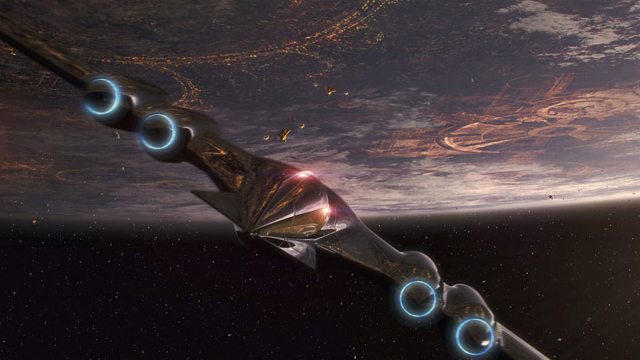
Aside from a handful of beautiful individual shots, Attack of the Clones is somewhat of a slog to watch. The film seeks to continue the storylines set up in The Phantom Menace but it is mostly remembered for slipping frequently into a melodramatic romance. It often eschews the levity of earlier films and instead doubles down on the telling-rather-than-showing style of overwrought world-building featured in the previous film. It was a trailblazer in the realm of computer-generated special effects at the time, but a decade and a half later even that aspect of the film looks pretty silly.
Purchase now on Amazon for $19.99.
Star Wars: Episode III — Revenge of the Sith (2005)
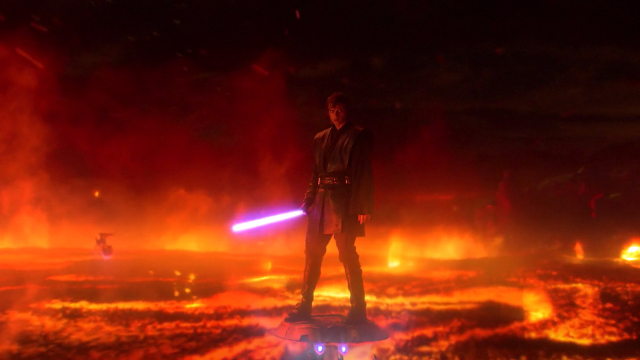
The third and final act of Lucas’s mostly-maligned prequel series is also generally regarded as its savior. In Revenge of the Sith, the prequel trilogy’s build toward the fall of the Galactic Republic finally comes to a head, and — after decades of mystery — the genesis of the franchise’s most-feared, most-beloved villain, Darth Vader is revealed. With regards to both storytelling and visual effects, it’s as big and ambitious as the franchise gets — even if it tends to drag here and there.
Purchase now on Amazon for $19.99.
Solo: A Star Wars Story (2018)
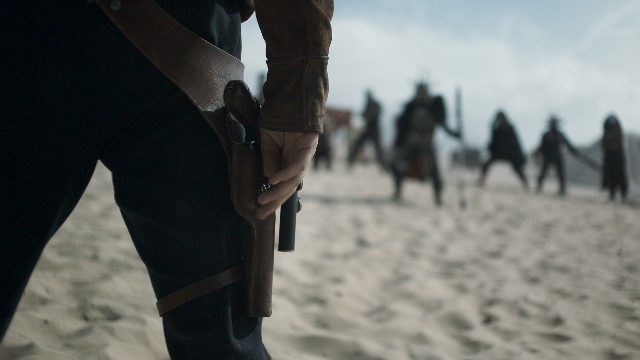
Ron Howard’s 2018 anthology film Solo: A Star Wars Story has significantly lower stakes than other films in the franchise — for once, the entire universe isn’t hanging in the balance. The film portrays the earlier years of Han Solo, before he became the gunslinging flyboy audiences fell head-over-heels for back in 1977. It’s more than a little trite — and it’s strange to see someone fill the role who isn’t Harrison Ford — but it’s a generally fun affair featuring some of the seediest characters in the Star Wars universe.
Purchase now on Amazon for $19.99.
Rogue One: A Star Wars Story (2016)
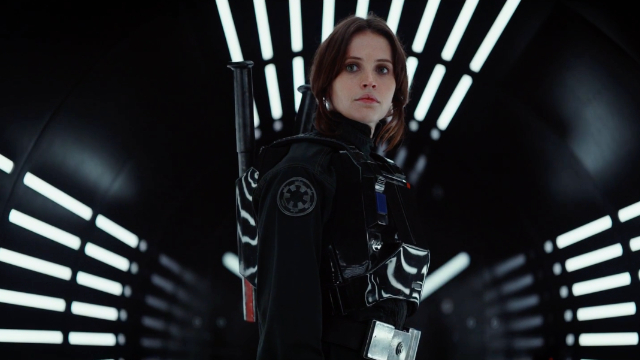
In his 2016 film, director Gareth Edwards tells the story of the band of rebel freedom fighters responsible for stealing the plans to a planet-destroying space station called the Death Star. It displays an incredible attention to detail and makes the film feel as flush with the world illustrated in the original 1977 film as possible — because Rogue One ends right where Star Wars begins. It recreates the grimy, lived-in feel and muted color palette of the first film. It also brings back the thick sideburns and frequent mustaches, which makes the characters feel like they were transported here from the late 1970s. The film features an extremely exciting third act — but it also jumps around frequently, focusing too much on fan service and not enough on the characters themselves.
Purchase now on Amazon for $13.99.
Star Wars (1977)
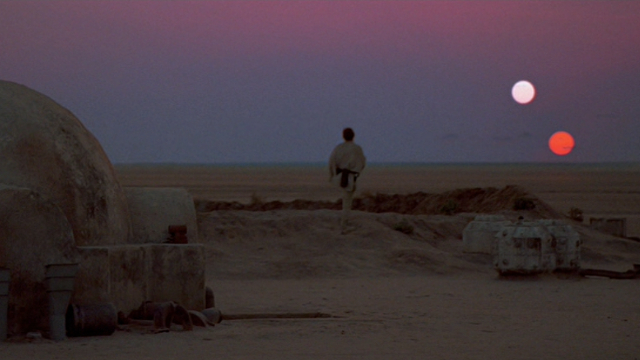
The film that most fans now know as Star Wars: Episode IV — A New Hope was simply called Star Wars when it hit theaters in 1977. George Lucas’s visionary work became an instant sensation, telling the exciting story of three heroes — Luke Skywalker, Han Solo and Leia Organa — thrust into a space civil war between good and evil. The film boasted incredible worldbuilding and groundbreaking special effects unlike anything audiences had seen before. It was, for a time, the highest-grossing film in history and today remains among the American Film Institute’s 100 Greatest American Films.
Purchase now on Amazon for $19.99.
The Empire Strikes Back (1980)
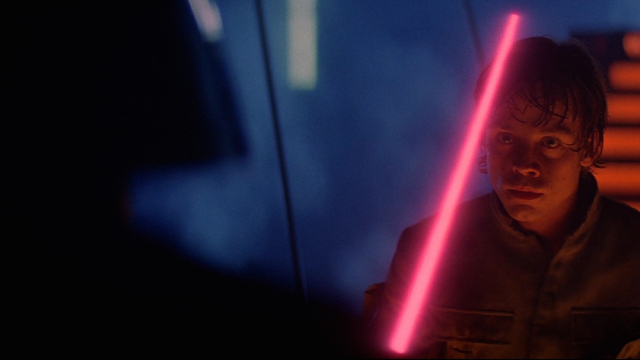
This film seeks to deepen the world audiences went wild for in 1977. Director Irvin Kershner and screenwriter Lawrence Kasdan work in tandem to create a story which builds upon its predecessor by applying pressure to the internal and external relationships of the central protagonists and antagonists. Everything becomes increasingly complex. For a film full of cool practical effects, spaceship dogfights and wizards with laser swords — it nonetheless manages to be deeply character-driven and is lauded even today by many as the gold standard of sequel films.
Purchase now on Amazon for $19.99.
Return of the Jedi (1983)
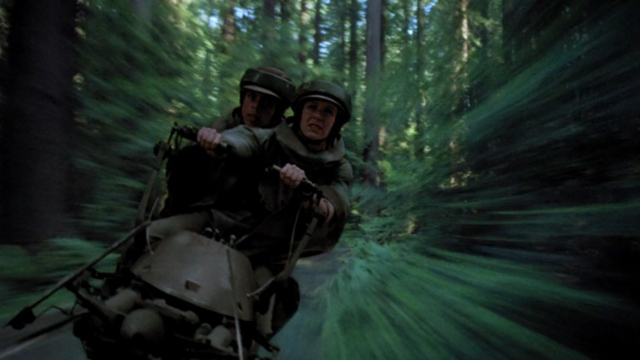
The original trilogy concludes in 1983 with Richard Marquand behind the camera. The heroes and their rebel allies are building toward a critical attack that will hopefully deal the finishing blow to the leaders of the Galactic Imperial regime. Luke Skywalker in particular moves ever closer to his destiny: a grand clash with Darth Vader in the presence of the Emperor of the evil Galactic Empire. The film, while not as flawlessly paced or emotionally rich as its predecessors, it outdoes them with regards to its stunning special effects and creature design.
Purchase now on Amazon for $19.99.
Star Wars: The Force Awakens (2015)
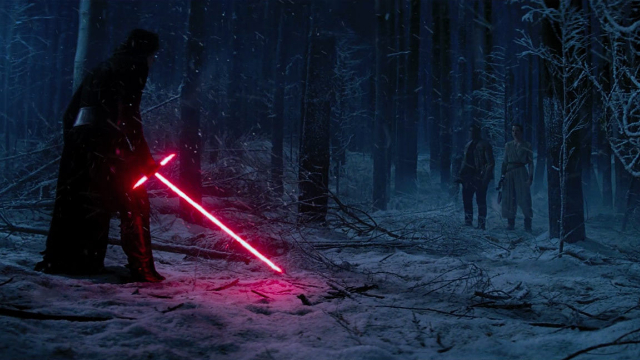
J.J Abrams teamed with The Empire Strikes Back and Return of the Jedi screenwriter Lawrence Kasdan in a good-faith effort to re-energize the now-Disney-owned franchise with its first entry in over a decade. It tells the story of a new generation of heroes who must liberate the galaxy from evil once more. The Force Awakens is a fun, exciting film — even if it does feel rather contrived, leaning too heavily on its source material, clearly frightened to venture away from the ideas put forth in the three films that launched the franchise.
Purchase now on Amazon for $19.99.
Star Wars: The Last Jedi (2017)

After more than three and a half decades of mostly diminishing returns, Rian Johnson’s 2017 entry Star Wars: The Last Jedi was a refreshing referendum on what this aging franchise needs to stay vital — and what it needs to leave behind. The film reveals the story of Luke Skywalker’s last three decades since audiences last saw him in 1983. It strips away his character’s layers, revealing the man behind the myth, and how he cracked under the pressure of being the galaxy’s savior. It’s the boldest, most compelling Star Wars film in decades.
Purchase now on Amazon for $19.99.
We are a participant in the Amazon Services LLC Associates Program, an affiliate advertising program designed to provide a means to earn fees by linking to Amazon.com and affiliated sites.
